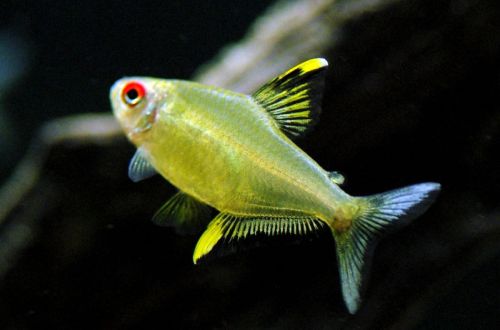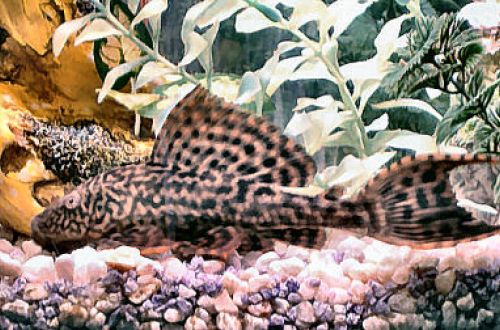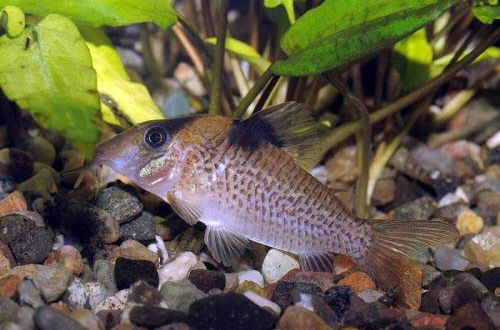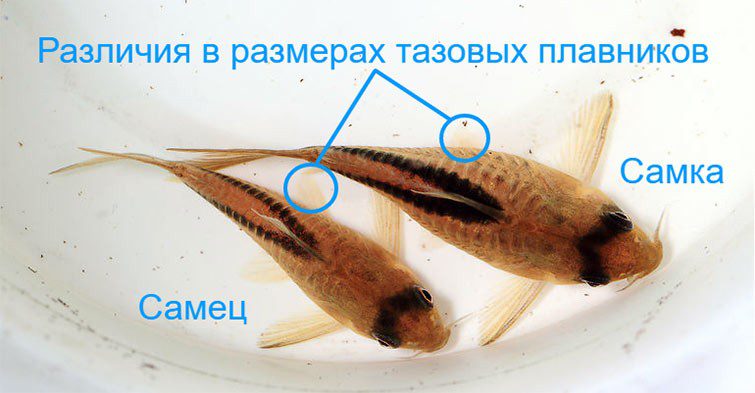
Reproduction of catfish Corydoras
In nature, like most fish from the Amazon basin, spawning occurs in the summer with the onset of the rainy season. In the northern hemisphere at this time, autumn-winter. Continued rainfall causes river levels to rise and large areas of tropical forests to be flooded. The abundance of food and significant changes in the hydrochemical composition of water serve as a signal for reproduction. When breeding Corydoras catfish, it will be necessary to recreate these seasonal changes, but it is advisable to do them in a separate spawning aquarium rather than in general, so as not to cause inconvenience to other fish species.
Any tank of sufficient volume, for example, from 40 liters, is suitable as a spawning aquarium. The design is the simplest, the main thing is to provide thickets of plants (live or artificial) that can act as a spawning ground. The minimum set of equipment includes a simple airlift filter with a “mature” sponge, a light source and a heater.
Contents
How to determine the sex of cory catfish
Differences between male and female Corydoras
 You can distinguish between male and female Corydoras by their size (females are larger) and by the structure of the pelvic fins, which are noticeably noticeably longer in males
You can distinguish between male and female Corydoras by their size (females are larger) and by the structure of the pelvic fins, which are noticeably noticeably longer in males
Before you start breeding, you should first make sure that there is at least one sexually mature male / female pair in the group. Gender differences in Corydoras are not significant, so you have to look closely. It is best to look at the fish from above. The females appear noticeably fuller, and the pelvic fins are small and rounded. Males, in turn, are slimmer, and their pectoral fins are longer and pointed. An additional feature for some species is the dorsal fin. In females it is rounded, in males it is triangular in shape.
Reproduction
It is believed that the optimal time for breeding Corydoras occurs at the end of autumn and the beginning of winter (November, December), which corresponds to the rainy season in the Amazon. However, since these catfish have been living in the artificial environment of aquariums for many generations, they have largely lost the instinct to breed seasonally, so spawning can be initiated at any other time. If a spawning aquarium is used, then after relocation it is necessary to wait a couple of weeks for the fish to get used to the new place and only then start breeding.
Females mate with several males at the same time, so in order to maximize the number of fertilized eggs, a group will be required where there will be 2-3 males per female.
The incentive for spawning is a change in the environment:
1. For several days, part of the water is replaced with fresh water, while the temperature should be a couple of degrees lower than in the aquarium. By adding cool water daily, the overall temperature drops to 21–22°C and is subsequently maintained at this level. Water renewal continues.
2. Aeration is increased to increase the concentration of dissolved oxygen. To do this, you can place a few additional spray stones or turn on the aeration function in the filter, if it is provided.
3. The diet uses high-protein foods and/or live foods, such as bloodworms, brine shrimp, etc.
It is desirable to perform water changes at the same time as cleaning the soil to maintain high water quality and avoid excessive accumulation of organic waste, which is especially important when using live feed.
If the imitation of the rainy season works, then soon the catfish will come to a spawning state. At this time, females noticeably swell from caviar, and males begin to actively pursue them. When the female is ready, she accepts the courtship of her partner and the couple lays eggs.
The spawning process itself may seem somewhat exotic – fertilization occurs in the mouth of females, where the egg is placed and a portion of the male’s seed is swallowed, then the egg is attached to a flat hard surface, usually on glass, or on plants. The procedure is repeated several times until all the eggs are fertilized, as noted above, several males can act as fathers.
Catfish eggs Corydoras
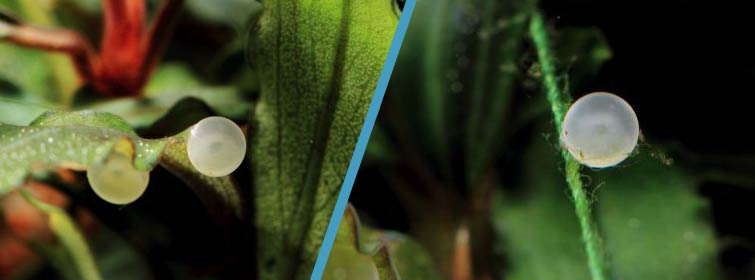 Fertilized eggs of Corydoras catfish fixed on plant leaves and special spawning threads
Fertilized eggs of Corydoras catfish fixed on plant leaves and special spawning threads
Corydoras eat their caviar. If the eggs appeared in the spawning aquarium, then the catfish are returned back. When “moving”, they may need to acclimatize. In the case when spawning took place in a common aquarium, then the eggs should be transferred to another tank with identical water conditions or special incubators should be used.
The fry appear within 3-5 days, and after a couple of days, when their yolk sacs run out, they will begin to accept microfood such as Artemia nauplii, shoe ciliates or specialized products for juvenile aquarium fish.



